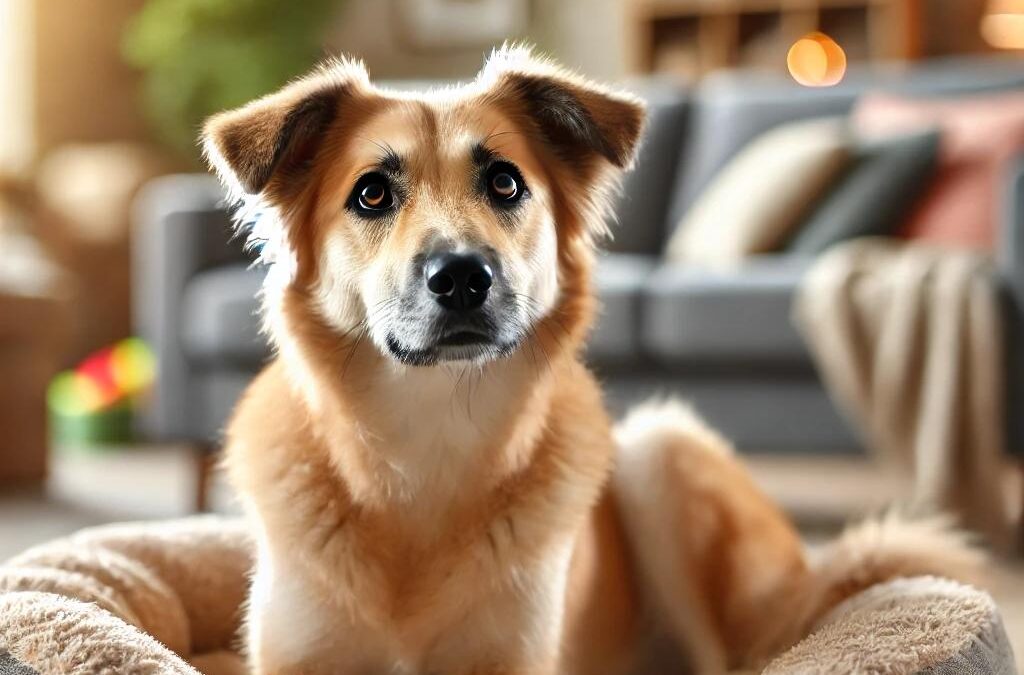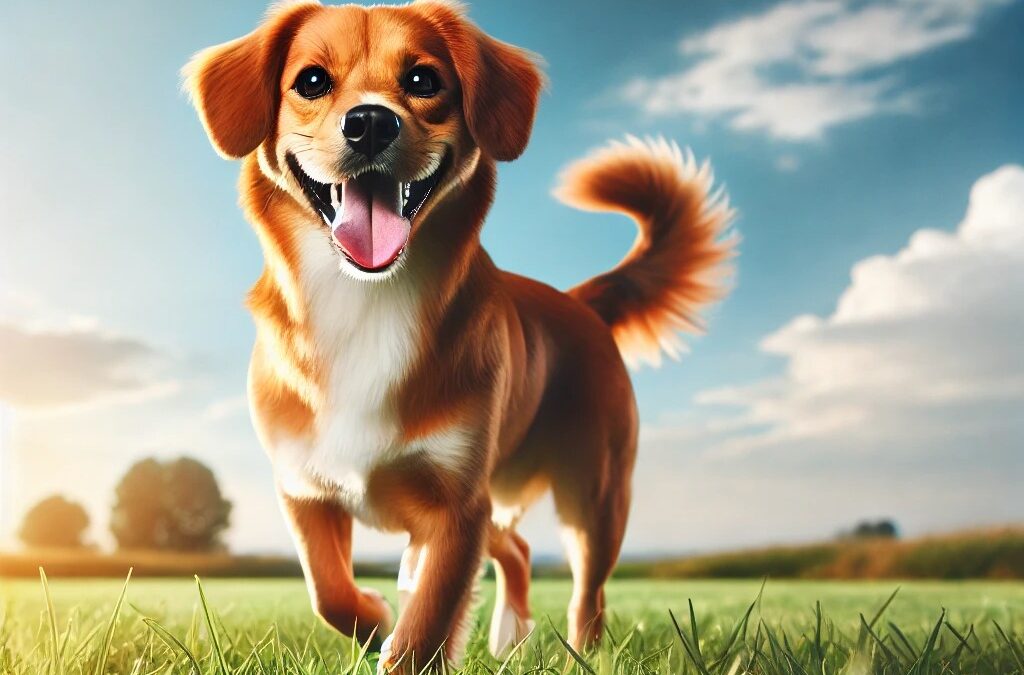
執筆者 TCMVET | 2024年11月3日 | リサーチ&ニュース
猫は不快感を隠すのが得意なので、健康上の問題を早期に発見するのは困難です。微妙な病気の兆候に気づけば、問題が深刻化する前に対処することができます。このガイドでは、猫の病気の最も一般的な症状と、猫の体調が悪いと思われる場合の対処法について説明します。
1. 食欲や喉の渇きの変化
食事や飲水の習慣に顕著な変化が見られるのは、猫に何か異常があるかもしれないことを示す最初の兆候の 1 つです。
- 食欲減少猫が突然食べ物に興味を失った場合、胃腸の問題、感染症、または歯の問題の兆候である可能性があります。
- 喉の渇きの増加: 糖尿病、腎臓病、甲状腺機能亢進症などの病気を患っている猫は、通常よりも多くの水を飲むことがよくあります。猫が頻繁に水飲みボウルに近づいているのに気づいたら、獣医に相談してください。
2. 無気力とエネルギー不足
猫は長時間眠ることで知られていますが、猫がいつもより遊びたがらなかったり、いつもより疲れているようであれば、病気の可能性があります。一般的な原因としては、感染症、痛み、慢性疾患などがあります。猫のエネルギー レベルを監視し、行動に大きな変化がないか注意してください。
3. 嘔吐または下痢
時々嘔吐するのは一部の猫にとって正常な場合もありますが、頻繁に嘔吐したり下痢をしたりする場合は、消化器疾患、中毒、感染症などの深刻な健康問題を示している可能性があります。脱水症状を防ぎ、適切な治療を確実に行うために、症状が長引く場合はすぐに対処する必要があります。
4. 体重の減少または増加
突然の体重の変化は、潜在的な健康問題の兆候である可能性があります。
- 減量甲状腺機能亢進症、癌、腎臓病を患っている猫は、普通に食事をしていても急激に体重が減ることがよくあります。
- 体重増加予期せぬ体重増加はホルモンの不均衡を示している可能性があり、肥満につながる可能性があり、他の健康問題のリスクが高まります。
5. 呼吸器症状
猫が呼吸困難、喘鳴、咳をしている場合は、呼吸器感染症、喘息、その他の肺関連の病気の兆候である可能性があります。くしゃみや鼻水も、猫が獣医の診察を必要としている兆候です。
6. 行動の変化
体調が悪い猫は隠れることが多くなったり、攻撃的になったり、不安そうに見えたりすることがあります。また、毛づくろいをやめたり、過度に鳴き声を上げたりする猫は、不快感や痛みを感じている可能性があります。これらの行動は、身体的な症状だけでなく、猫の状態について多くのことを明らかにすることが多いので、注意してください。
7. 排尿の問題
排尿頻度の変化、排尿困難、または尿に血が混じっている場合は、尿路感染症、腎臓病、または膀胱結石の可能性があります。尿の問題は特にオス猫にとって緊急性が高く、尿道閉塞は命にかかわることがあります。
8. 毛皮の状態が悪い
健康な猫の毛は光沢があり滑らかです。猫の毛が艶がなく、もつれていたり、脂ぎっていたりする場合は、栄養不足、皮膚疾患、または病気の兆候である可能性があります。体調が悪い猫は毛づくろいをしなくなり、毛が艶を失ってしまうこともあります。
9. 口臭
猫の口臭は、歯周病や虫歯などの歯の問題を示している場合が多いです。また、喉の渇きや排尿回数の増加などの他の症状を伴う場合は特に、口臭は腎臓病や糖尿病の症状である可能性があります。
猫が病気かもしれないと思ったらどうするか
猫にこれらの兆候が見られた場合は、獣医師に相談することが重要です。早期の診断と治療は、猫の健康管理に大きな違いをもたらす可能性があります。
- 症状を監視する: 気づいた新しい行動や身体症状を記録しておきます。
- 獣医を訪ねる: 徹底的な健康診断と必要な検査を受けるために獣医師に予約を入れてください。
- 快適さを提供する: 猫が回復するまで、快適で静かな場所で休めるようにしてください。
猫はおとなしい生き物かもしれませんが、病気の微妙な兆候に注意を払えば、健康上の問題が深刻化する前にそれを発見することができます。猫の健康に積極的に取り組むことで、あなたの愛猫が幸せで健康な状態を保てます。

執筆者 TCMVET | 2024年11月3日 | リサーチ&ニュース
Secondhand smoke doesn’t just harm humans; it also poses significant health risks to pets, especially dogs. From respiratory issues to increased cancer risk, dogs exposed to cigarette smoke can suffer a range of health problems. In this article, we’ll explore the effects of secondhand smoke on dogs, the potential health risks, and how to protect your furry friends.
Why Secondhand Smoke is Dangerous for Dogs
Dogs are more susceptible to secondhand smoke than many realize. Their smaller size and frequent grooming habits increase their exposure to harmful chemicals. Unlike humans, dogs can’t escape or voice discomfort, making it crucial for pet owners to understand and mitigate these risks.
Health Risks of Secondhand Smoke for Dogs
- Respiratory Problems Secondhand smoke can irritate a dog’s respiratory system, causing symptoms like coughing, sneezing, and wheezing. Chronic exposure can lead to more severe conditions, including asthma and bronchitis. Dogs with preexisting respiratory issues are especially vulnerable.
- Increased Cancer Risk Studies have shown that dogs exposed to secondhand smoke face an elevated cancer risk. According to research from Colorado State University, breeds with shorter nasal passages, such as Pugs and Bulldogs, are more prone to lung cancer, as smoke particles are more likely to reach their lungs. Conversely, breeds with longer nasal passages, like Collies and German Shepherds, face a higher risk of nasal cancer, as smoke particles infiltrate the nasal cavity.
- Bladder Cancer: A study from Purdue University found that dogs exposed to cigarette smoke have a sixfold increased risk of bladder cancer. Toxic particles from smoke can settle in the bladder, increasing the likelihood of malignant cell formation.
- Eye Irritation Dogs frequently exposed to smoke may experience eye irritation, redness, and even tearing. This discomfort can cause excessive pawing at their eyes, which may lead to further irritation or infection.
- Skin Conditions Harmful chemicals in cigarette smoke don’t just affect a dog’s lungs or nasal passages; they also settle on their fur and skin. Dogs that groom themselves can ingest these chemicals, potentially leading to skin conditions like dermatitis and fur irritation.
- Cardiovascular Issues Exposure to secondhand smoke can increase a dog’s risk of heart disease. Just as with humans, smoke can damage the cardiovascular system, contributing to heart-related health issues over time.
受動喫煙から愛犬を守る方法
The best way to protect your dog from the harmful effects of secondhand smoke is to maintain a smoke-free environment. Here are a few practical steps:
- Avoid Smoking Indoors: Smoking indoors can lead to lingering smoke particles in carpets, furniture, and other surfaces that can continue to harm pets even after smoking stops.
- Establish Smoke-Free Zones: Designate specific smoking areas away from your dog, preferably outdoors.
- Clean and Ventilate: Regularly vacuum and clean your home to reduce the accumulation of smoke residue. Open windows and use air purifiers to improve indoor air quality.
- Practice Good Hygiene: If you smoke, wash your hands and change your clothing before interacting closely with your dog to minimize their exposure to lingering toxins.
Secondhand smoke poses serious health risks to dogs, from respiratory issues to cancer and cardiovascular problems. By understanding these dangers and taking preventive measures, pet owners can create a safer, healthier environment for their furry companions. Prioritizing a smoke-free home is one of the best ways to safeguard your dog’s well-being.

執筆者 TCMVET | 2024年10月15日 | リサーチ&ニュース
肢端舐め肉芽腫は肢端舐め皮膚炎とも呼ばれ、特定の部位を舐めすぎることで犬によく見られる皮膚疾患です。通常は脚の下部に見られ、この自己誘発性皮膚病変は早期に対処しないと慢性的な問題を引き起こす可能性があります。この記事では、肢端舐め肉芽腫の原因、症状、および治療オプションについて説明し、ペットの飼い主が長期的な問題になる前にこの疾患を特定して管理できるようにします。
末端舐め肉芽腫とは何ですか?
肢端舐め肉芽腫は、特定の部位(通常は下肢)を繰り返し舐めることによって形成される皮膚病変です。最もよく影響を受ける部位は、前肢の手首(手根関節)と後肢の飛節(足首)です。時間が経つにつれて、絶え間ない舐めによって脱毛、赤み、炎症、皮膚の肥厚が起こり、治療せずに放置すると最終的に感染症につながる可能性があります。
肢端舐め肉芽腫の原因
犬が過度に舐めることで肉芽腫が形成される原因には、次のようないくつかの要因が考えられます。
- アレルギー
食物アレルギー、環境要因、またはノミなどによりかゆみが生じ、犬は不快感を和らげるために特定の部分を舐めることがあります。
- Infections
真菌、細菌、寄生虫の感染により犬の皮膚が炎症を起こし、犬が執拗に舐めるようになることがあります。
- 痛み
関節炎などの関節や骨の根本的な痛みにより、犬は不快感を和らげようとして患部を舐めることがあります。
- 行動上の問題
ストレス、不安、退屈などにより、繰り返し舐めるなどの強迫的な行動が起こり、最終的には肉芽腫の形成につながります。
- 神経学的問題
場合によっては、神経損傷やその他の神経学的問題が過度の舐めを引き起こすことがあります。
肢端舐め肉芽腫の症状
末端舐め肉芽腫は、通常、簡単に発見できます。最も一般的な症状には、次のようなものがあります。
- 脱毛 舐める場所で
- 赤く炎症を起こした皮膚
- 皮膚が厚くなったり硬くなったりする 被災地で
- 開いた傷 または感染する可能性のある潰瘍
- 頻繁に舐めたり噛んだりする 同じ場所の
これらの兆候に気付いた場合は、獣医師に相談して診断と治療を受けることが重要です。
肢端舐め肉芽腫の治療法
- 根本的な原因への対処
肢端舐め肉芽腫の治療の第一歩は、舐める原因を特定し、それに対処することです。問題の根本原因に応じて、アレルギー、感染症、関節痛などの治療が必要になる場合があります。獣医師は、感染症には抗生物質、アレルギーには抗ヒスタミン薬、関節炎やその他の痛みに関連する問題がある場合は鎮痛剤を処方することがあります。
- 行動修正
不安や退屈が過度の舐め行動の原因になっている場合は、行動の修正が必要になる場合があります。運動量を増やし、精神的刺激を与え、環境の変化によってストレスを軽減すると、強迫的な舐め行動を軽減するのに役立ちます。獣医師は、必要に応じて抗不安薬やサプリメントを勧めることもあります。
- Topical Medications
薬用クリームやスプレーなどの局所治療は、皮膚を落ち着かせ、治癒を促進するのに役立ちます。一部の製品には、犬がその部分をそれ以上舐めないようにする成分も含まれています。
- 包帯や電子首輪の使用
場合によっては、患部に包帯を巻いたり、電子首輪(エリザベスカラー)を使用したりすることで、それ以上舐めるのを防ぎ、皮膚が治癒する時間を与えることができます。
- レーザー治療または手術
重度または慢性の場合、治癒を促進するためにレーザー治療または肉芽腫の外科的除去が必要になることがあります。これらの治療は通常、より保守的な方法が効かない場合にのみ行われます。
肢端舐め肉芽腫の予防
肢端舐め肉芽腫を予防するには、問題になる前にその行動の潜在的な原因に対処する必要があります。定期的な獣医の診察、刺激的な環境の維持、根本的な医学的問題の早期治療により、犬がこの症状を発症する可能性を減らすことができます。
末端舐め肉芽腫は、特に慢性化すると治療が難しい病気です。早期介入が長期的な合併症を防ぐ鍵となるため、舐めすぎや皮膚病変の発症に気づいたらすぐに獣医の診察を受けることが重要です。医療、行動修正、予防ケアを適切に組み合わせることで、犬は回復し、さらなる問題を回避できます。

執筆者 TCMVET | 2024年10月10日 | リサーチ&ニュース
Pinched nerves can be a serious issue for dogs, leading to discomfort and mobility problems. While the term might sound alarming, understanding what it entails is essential for every dog owner. Unlike humans, where a pinched nerve usually involves compression of the nerve root, dogs experience similar symptoms due to pressure on the spinal cord itself. Here’s a closer look at what causes this condition, how to identify it, and the best ways to manage it.
Understanding the Mechanics of a Pinched Nerve
A pinched nerve in dogs often results from something pressing on the spinal cord. The spinal cord is protected by the vertebrae, and between each vertebra are intervertebral discs that cushion the bones and allow for movement. When these discs bulge or rupture, they can compress the spinal cord, leading to pain and other neurological symptoms.
While intervertebral disc disease is the most common cause of a pinched nerve in dogs, other factors such as tumors or blood clots affecting the spinal cord can also contribute, although these instances are rare.
注意すべき症状
Recognizing the signs of a pinched nerve in your dog is crucial for prompt treatment. Common symptoms include:
- Pain or Discomfort: Your dog may exhibit signs of pain such as whining, yelping, or being reluctant to move.
- 弱点: You might notice your dog struggling to walk or jumping.
- Impaired Coordination: Difficulty maintaining balance or wobbly movements can indicate nerve issues.
- 行動の変化: If your normally active dog becomes lethargic or irritable, it may be a sign of pain.
診断と治療の選択肢
If you suspect your dog has a pinched nerve, it’s important to seek veterinary care as soon as possible. A veterinarian will perform a thorough examination and may recommend diagnostic tests like X-rays or MRIs to determine the exact cause of the symptoms.
Treatment options typically include:
- 薬: Your vet may prescribe anti-inflammatory drugs or pain relief medications to manage your dog’s discomfort.
- Rest and Activity Limitation: Reducing your dog’s activity can help alleviate pressure on the spinal cord and promote healing.
- 理学療法: Engaging in rehabilitation exercises can improve mobility and strengthen the muscles surrounding the spine.
- 外科的介入: In severe cases where conservative treatments are ineffective, surgery may be necessary to relieve pressure on the spinal cord.
予防措置
While not all cases of pinched nerves can be prevented, there are steps you can take to reduce your dog’s risk:
- 健康的な体重を維持する: Keeping your dog at a healthy weight can lessen the strain on their spine.
- Ensure Proper Nutrition: A balanced diet with adequate nutrients can support overall spinal health.
- Provide Safe Play Environments: Avoid high-impact activities that could lead to injuries, particularly in older dogs or those with pre-existing conditions.
Understanding pinched nerves in dogs is essential for any responsible pet owner. By being aware of the symptoms, seeking timely veterinary care, and implementing preventive measures, you can help ensure your dog remains healthy and active. If you notice any signs of discomfort in your dog, don’t hesitate to reach out to your veterinarian for guidance and support.

執筆者 TCMVET | 2024年8月17日 | リサーチ&ニュース
ペットのストレスは見過ごされがちですが、ペットの健康や行動に重大な影響を及ぼす可能性があります。人間と同様に、ペットも環境の変化、大きな音、飼い主との別離など、さまざまな要因によりストレスを感じることがあります。ストレスがペットにどのような影響を与えるか、またストレスを管理する方法を理解することは、ペットの全体的な健康を保つために重要です。この記事では、ペットのストレスの一般的な原因、ストレスがペットの健康に及ぼす影響、ストレスを軽減してペットを幸せで健康に保つ方法について説明します。
1. ペットのストレスの一般的な原因
ペットはさまざまな理由でストレスを感じることがあります。その兆候を早期に認識することが重要です。
- 環境の変化: 新しい家への引っ越し、家具の配置換え、新しいペットの導入はペットにとって不安なことであり、ストレスにつながる可能性があります。
- Separation Anxiety: ペット、特に犬は、長時間放置されると不安になり、破壊的な行動につながることがあります。
- 大きな音: 雷雨、花火、その他の大きな音はペットに恐怖や不安を引き起こし、ペットが隠れたり、苦痛の兆候を示したりすることがあります。
- ルーチンの欠如: ペットは規則正しい生活を送ることで元気に成長します。不規則な給餌時間や運動習慣の変化など、規則的なスケジュールが乱れると、ストレスにつながる可能性があります。
2. ストレスがペットの健康に与える影響
慢性的なストレスはペットの身体的および精神的健康に深刻な影響を及ぼす可能性があります。
- Behavioral Changes: ストレスは、攻撃性の増加、過度の吠え声、破壊的な噛みつき、不適切な排泄につながる可能性があります。これらの行動は、ペットが不安に対処する方法であることが多いです。
- 消化器系の問題: ストレスはペットの消化器系に悪影響を及ぼし、嘔吐、下痢、食欲不振などの症状を引き起こす可能性があります。
- 免疫力の低下: ストレスが長引くとペットの免疫力が弱まり、感染症や病気にかかりやすくなります。
- 皮膚の問題: ペットは、皮膚炎やホットスポットなどのストレスによって引き起こされる症状により、過度の掻きむしり、舐め、脱毛などの皮膚の問題を発症する場合があります。
3. ペットのストレスを軽減する方法
ペットのストレスを管理することは、ペットの全体的な健康にとって不可欠です。効果的な戦略をいくつかご紹介します。
- 一貫したルーチンを維持する: 餌やり、散歩、遊びのスケジュールを定期的に守ることで、ペットに安心感を与え、不安を軽減することができます。
- 安全な空間を提供する: ペットが圧倒されたと感じたときに逃げ込める静かで快適な場所を確保してください。専用の部屋、居心地の良いベッド、またはクレートなどが考えられます。
- 鎮静剤を使用する: カモミール、バレリアンの根、CBD オイルなどの天然の鎮静サプリメントは、ペットの不安を軽減するのに役立ちます。さらに、フェロモン ディフューザーや鎮静スプレーを使用すると、よりリラックスできる環境を作り出すことができます。
- 身体的および精神的な刺激を高める: 定期的な運動や、パズル玩具やインタラクティブな遊びなどの精神的な刺激は、ペットを夢中にさせて疲れさせ、ストレスを軽減するのに役立ちます。
- 社会化と積極的な強化: ペットを徐々に新しい経験、人、他の動物に慣れさせることで、不安を軽減することができます。ストレスの多い状況でも、ポジティブな強化を使って落ち着いた行動を促しましょう。
ペットのストレスは健康や行動に重大な影響を及ぼしますが、適切な戦略をとれば、ストレスを管理し軽減することができます。一貫したルーチンを維持し、安全で落ち着いた環境を提供し、自然の鎮静剤を使用することで、ペットがストレスに対処し、より幸せで健康的な生活を送れるようにすることができます。ペットにストレスの兆候が見られたら、必ず獣医師に相談してください。獣医師は追加のアドバイスやサポートを提供できます。

執筆者 TCMVET | 2024年7月17日 | リサーチ&ニュース
熱心なペットの飼い主として、愛犬に影響を与える可能性のある嚢胞の種類を理解することは、愛犬の健康と幸福にとって非常に重要です。犬の嚢胞は大きさ、外観、重症度がさまざまであるため、嚢胞を特定して治療する方法を知ることは、愛犬が健康でいるための鍵となります。この記事では、犬の嚢胞のさまざまな種類、その原因、症状、効果的な治療オプションについて説明します。
犬の嚢胞について
嚢胞は、液体、空気、またはその他の物質で満たされる袋状の組織のポケットです。多くの嚢胞は良性ですが、中には医師の診察が必要なものもあります。犬に見られる最も一般的な嚢胞の種類は次のとおりです。
- 皮脂嚢胞
- 説明これらの嚢胞は、皮脂腺が詰まって皮脂が蓄積することで形成されます。
- 外観: 多くの場合、小さな隆起したしこりとして現れ、色は白またはわずかに青みがかっています。
- 処理多くの場合、脂腺嚢胞は治療を必要とせず、自然に治ります。ただし、感染したり不快感を引き起こしたりする場合は、外科的除去が必要になることがあります。
- 卵胞嚢胞
- 説明毛包嚢胞は毛包から発生し、毛が密集している部位によく見られます。
- 外観これらの嚢胞は大きさが異なり、破裂して分泌物が出ることもあります。
- 処理治療の選択肢としては、感染がある場合には外科的除去と抗生物質の使用があります。
- 皮様嚢胞
- 説明皮様嚢胞は先天性で、皮膚と毛包を含みます。
- 外観: 通常は硬く、背骨に沿って見られます。
- 処理合併症を防ぐために通常は外科的除去が推奨されます。
- 表皮嚢胞
- 説明これらの嚢胞は皮膚の外層から形成され、ケラチンで満たされています。
- 外観: 小さな丸い隆起として現れ、時間の経過とともにゆっくりと大きくなります。
- 処理多くの場合、外科的除去が最善の治療法です。
犬の嚢胞の症状
嚢胞の外観はさまざまですが、一般的な症状は次のとおりです。
- 皮膚の下の腫れやしこり
- 赤みや炎症
- 分泌物または出血
- Pain or discomfort
- 行動や食欲の変化
これらの症状に気付いた場合は、適切な診断のために獣医師に相談することが重要です。
犬の嚢胞の診断
診断には通常、身体検査が含まれ、次のようなものが含まれます。
- 穿刺吸引法(FNA)嚢胞の内容物の小さなサンプルを採取し、顕微鏡で検査します。
- 生検嚢胞の種類を特定するために、組織サンプルを採取してさらに分析します。
- イメージング嚢胞の大きさと位置を評価するために、X 線または超音波検査が使用されることがあります。
犬の嚢胞の治療
犬の嚢胞の治療計画は嚢胞の種類と重症度によって異なります。一般的な治療オプションは次のとおりです。
- 観察: 小さくて良性の嚢胞は、すぐに治療する必要はなく、変化を観察することができます。
- 外科的除去: これは、大きな嚢胞、感染した嚢胞、または不快感を引き起こす嚢胞に推奨されることが多いです。
- 薬: 感染症がある場合は抗生物質が処方される可能性があり、痛み止めの薬は不快感の緩和に役立ちます。
犬の嚢胞の予防
すべての嚢胞を予防できるわけではありませんが、犬の全体的な健康を維持することでリスクを軽減できます。定期的なグルーミング、バランスの取れた食事、定期的な獣医による検診は、早期発見と予防に不可欠です。
愛犬に影響を及ぼす可能性のある嚢胞の種類を理解することは、愛犬の健康と幸福にとって重要です。症状を認識し、適切な治療を受けることで、愛犬の幸せと健康を保つことができます。愛犬の特定のニーズに最適な治療法については、必ず獣医師に相談してください。忠実な仲間に最善のケアを提供するために、常に情報を入手し、積極的に行動してください。







